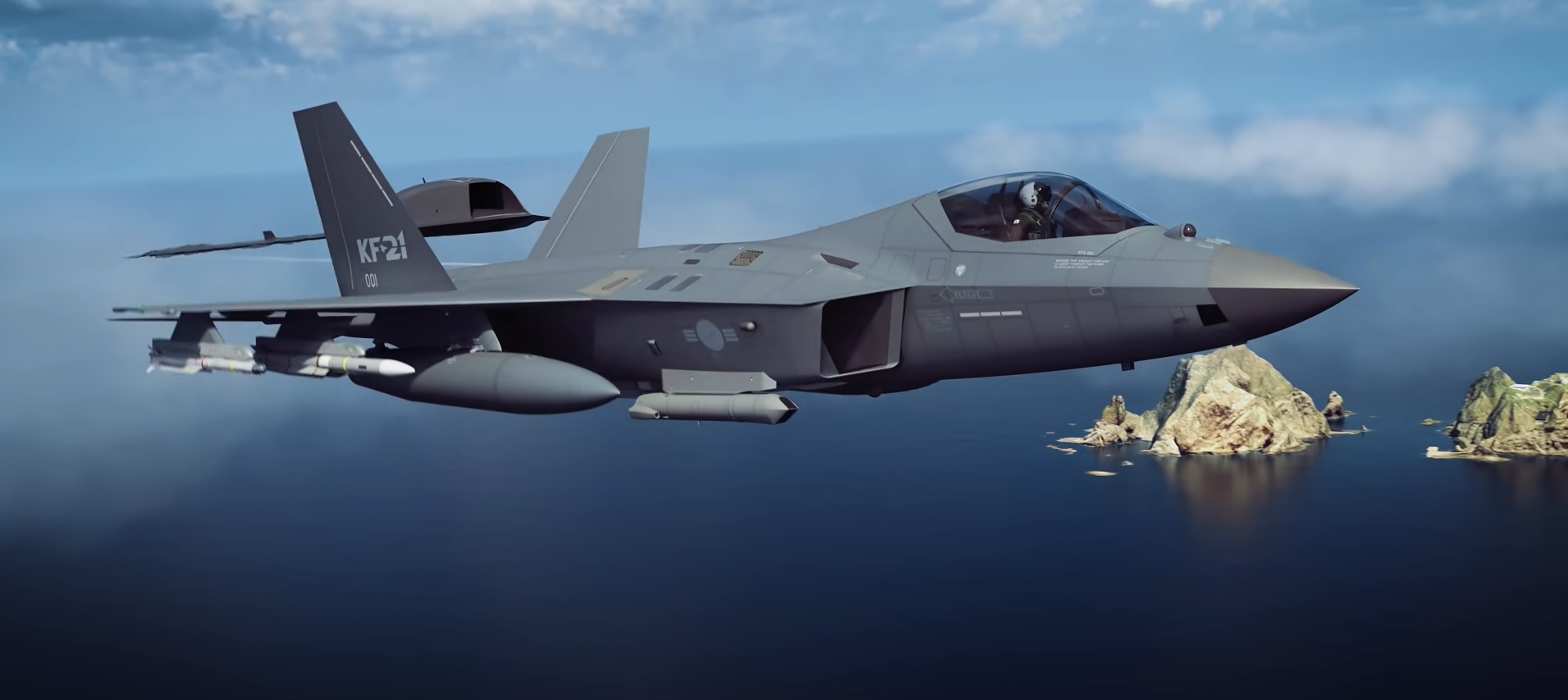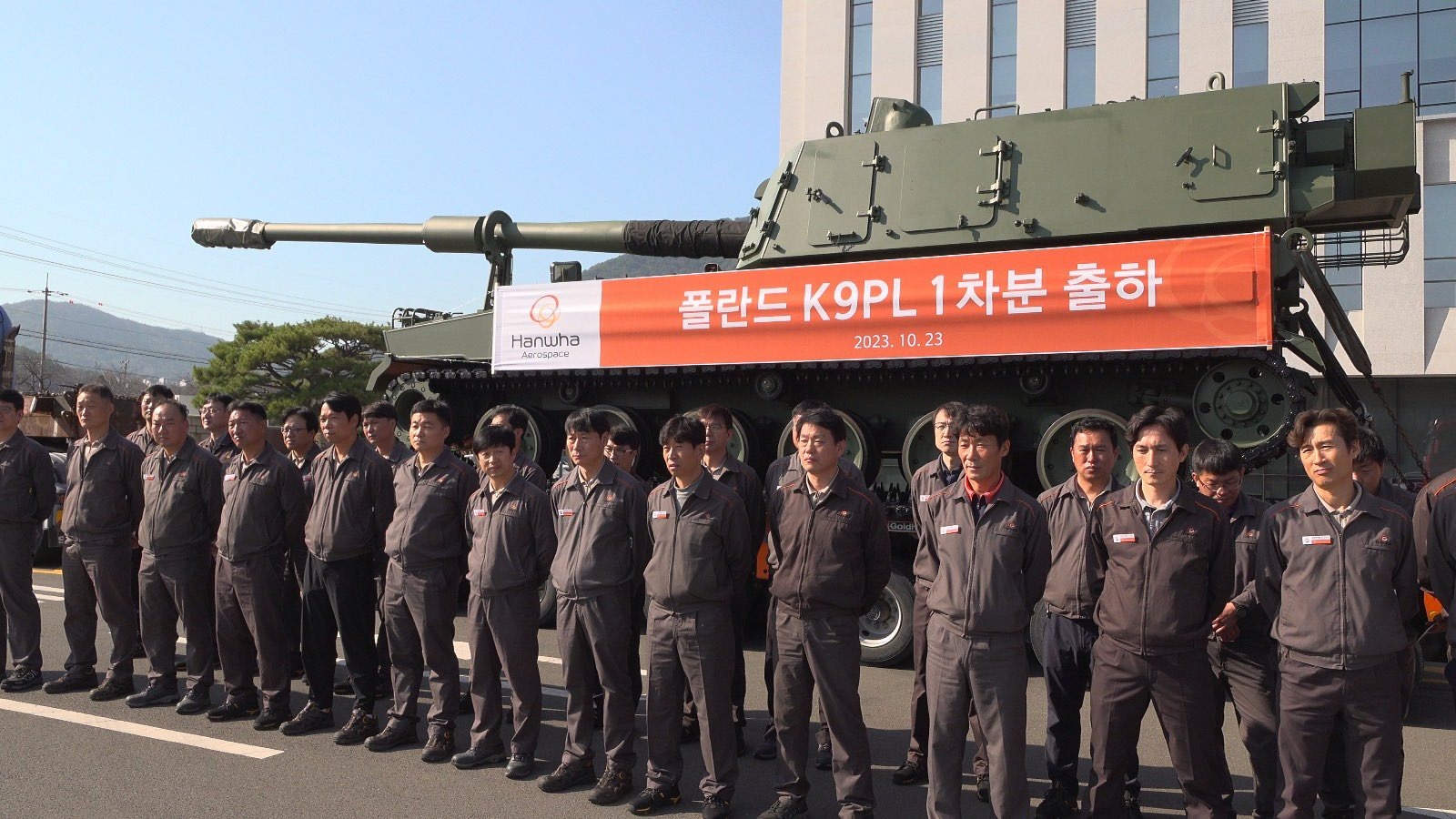With South Korea ascending the ranks of the global arms trade through the export of its advanced equipment, it is now entering a new arena by creating aviation engines anticipated to rival the acclaimed F414.
South Korean defense contractor Hanhwa Defense announced recently that the domestic jet engine that will power the Republic of Korea Air Force (RoKAF) KF-21 fighter will be identical in size to the F414 engine made by General Electric (GE) and used on Boeing F/A-18E/F Super Hornet and HAL Tejas Mk2, among others, but it will produce superior results.
The head of Hanwha Aerospace’s advanced aero engine business unit, Won-Wook Kim, told Janes during the Farnborough International Airshow 2024, which took place from July 22 to 26, that the engine had to fit in the same aircraft as GE’s F414. Hanhwa is assisting license building of the F414 for the KF-21 Boramae fighter jet.
“So our engine has to have the same dimensions [as the F414]. It will just have better performance,” Kim said. Hanhwa intends to replace the F414 in the KF-21 with its indigenously produced engine.
Earlier this week, the company showcased a prototype engine design that, according to the company, will be ready to power unmanned systems and the KF-21 fighter within the next ten years. The engine’s conceptual design was only recently completed, and a model was put on display at the Farnborough Airshow.

With around 24,000 pounds of force, the South Korean engine boasts a six-stage compressor—one less than the F414. A company representative cited by media reports noted that although 3D printing was not used for the engine prototype, it would be considered going forward.
Kim stated that the 15,000 lb thrust that was previously discussed originated only from the design requirement of the RoKAF, and the engine was capable of producing 15,000-18,000 pounds of force and 24,000-26,000 pounds with an afterburner.
The announcement comes days after the Defense Acquisition Program Administration (DAPA) of South Korea announced that the KF-21 Boramae multirole fighter aircraft in South Korea was now in the early manufacturing phase. The RoKAF is set to receive its initial group of aircraft from DAPA by the end of 2026, with mass production expected to extend until 2032.
F-16s “Sitting Ducks” For Russian MiG-31 Fighters? Putin Warns Of Consequences Over Fighting Falcons
The KF-21, an advanced supersonic fighter, is slated to be the main aircraft for South Korea’s Air Force and is expected to greatly improve the country’s three-axis defense system, which is aimed at countering potential threats from North Korea. The incorporation of this 4.5++ generation aircraft would significantly enhance South Korea’s air power, especially since it is a domestically produced model.

Adding an indigenous engine that matches the capability of a GE engine would be a massive feat for the South Korean defense industry. Experts believe Hanhwa will have accomplished a difficult technical achievement if it successfully develops its notion of a frighteningly complicated, locally built military jet engine.
Korean Aerospace Industries (KAI) will likely export the KF-21 aircraft once the domestic demand has been met. The integration of an indigenous engine is anticipated to make the export easier. Moreover, while Hanhwa officials did not talk about the engine’s potential for export in the future, it will probably be of interest overseas.
This is significant given that South Korea has established itself as a viable defense exporter at a time when Western and Russian arms manufacturers remain invested in producing arms for use in the Ukraine War.
South Korea Is A Global Defense Exporter & Powerhouse
Arms exports from South Korea have increased steadily from the USD 2-3 billion level in the late 2010s to USD 7.3 billion in 2021, USD 17.3 billion in 2022, and USD 14 billion in 2023. These figures validate the country’s status as a leader in the defense industry.
As per estimates, it’s predicted to grow to USD 20 billion by 2024.
Experts have also noted that South Korea has been steadily eating into the American defense exports pie as it woos customers in Europe, which has traditionally been dominated by Western arms, as explained in a detailed analysis by EurAsian Times.
The gobbling of the “American pie” in Europe and Asia has also meant that South Korean Howitzers are lining up in countries surrounding Russia and China. South Korea’s meteoric rise as an arms exporter is based on hot-selling equipment, including the K9 Howitzer, Chunmoo MLRS (Multiple Launch Rock System), K-2 battle tanks, and the FA-50 light attack aircraft.
Forget J-20, China’s H-20 Stealth Bomber Threatens ‘Easy Penetration’ Of LAC; How Can IAF Respond?
South Korean arms sales are primarily led by Hanhwa, which has propelled the Asian nation into the exclusive club of key defense exporters. From 2018 to 2022, the Stockholm International Peace Research Institute (SIPRI) ranked Korea as the world’s ninth-largest arms exporter.
It was one of the two Asian nations to appear among the top 25 exporters (the other being China, in fourth place). Hanhwa Defense contributed significantly to this rise.

The United Kingdom, Egypt, Malaysia, Vietnam, India, Indonesia, the Philippines, Poland, Norway, Turkey, Finland, Estonia, and Australia are among the countries that have acquired major weapon systems from Hanwha. One of the most significant developments has been the substantial arms sales to Poland since 2022, which include parts of the T/FA-50 trainer, K9 howitzers, and Chunmoo MRLS, along with Australia’s decision to purchase the Redback infantry combat vehicle in 2023.
More recently, on July 9, Hanwha Aerospace signed a $1 billion contract to provide 54 K9 Self-Propelled Howitzers and 36 K10 Ammunition Resupply Vehicles to Romania under a package deal that also includes scores of wheeled support vehicles and ammunition.
A major selling point of South Korea’s weaponry is its compatibility with NATO and US systems. According to the SIPRI, the nation accounts for 4.9% of NATO and its member nations’ military purchases, making it the third-largest provider of weaponry to the organization. In contrast to other contractors, South Korean defense firms are recognized for their prompt deliveries, making them a viable option.
- Contact the author at sakshi.tiwari9555 (at) gmail.com
- Follow EurAsian Times on Google News




